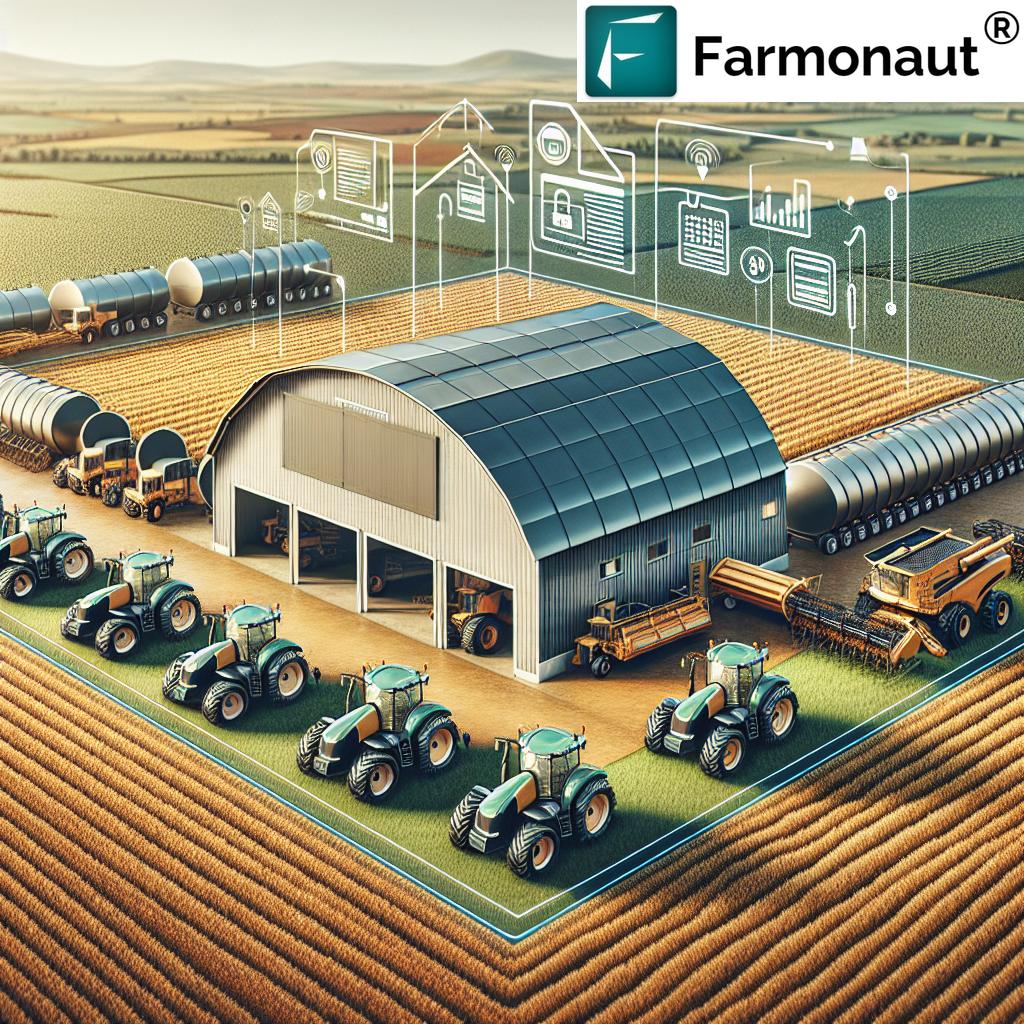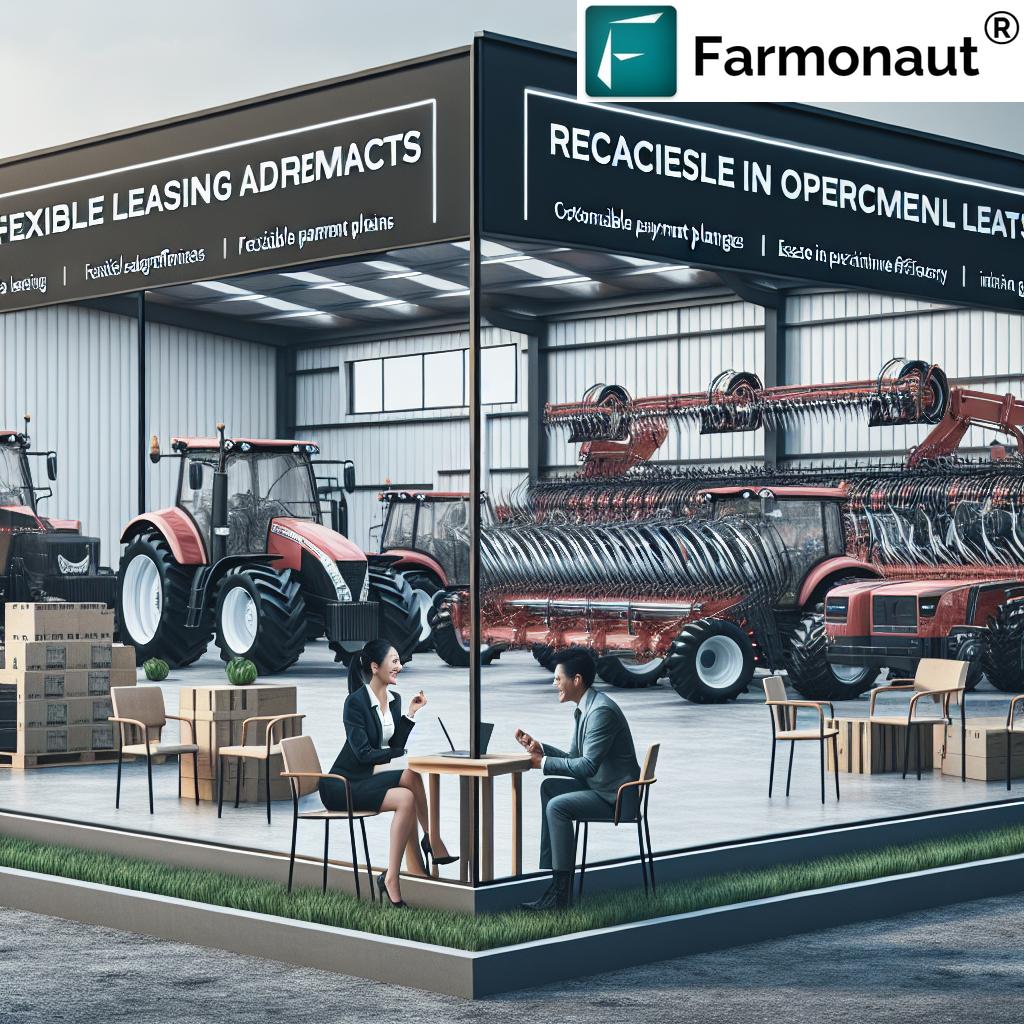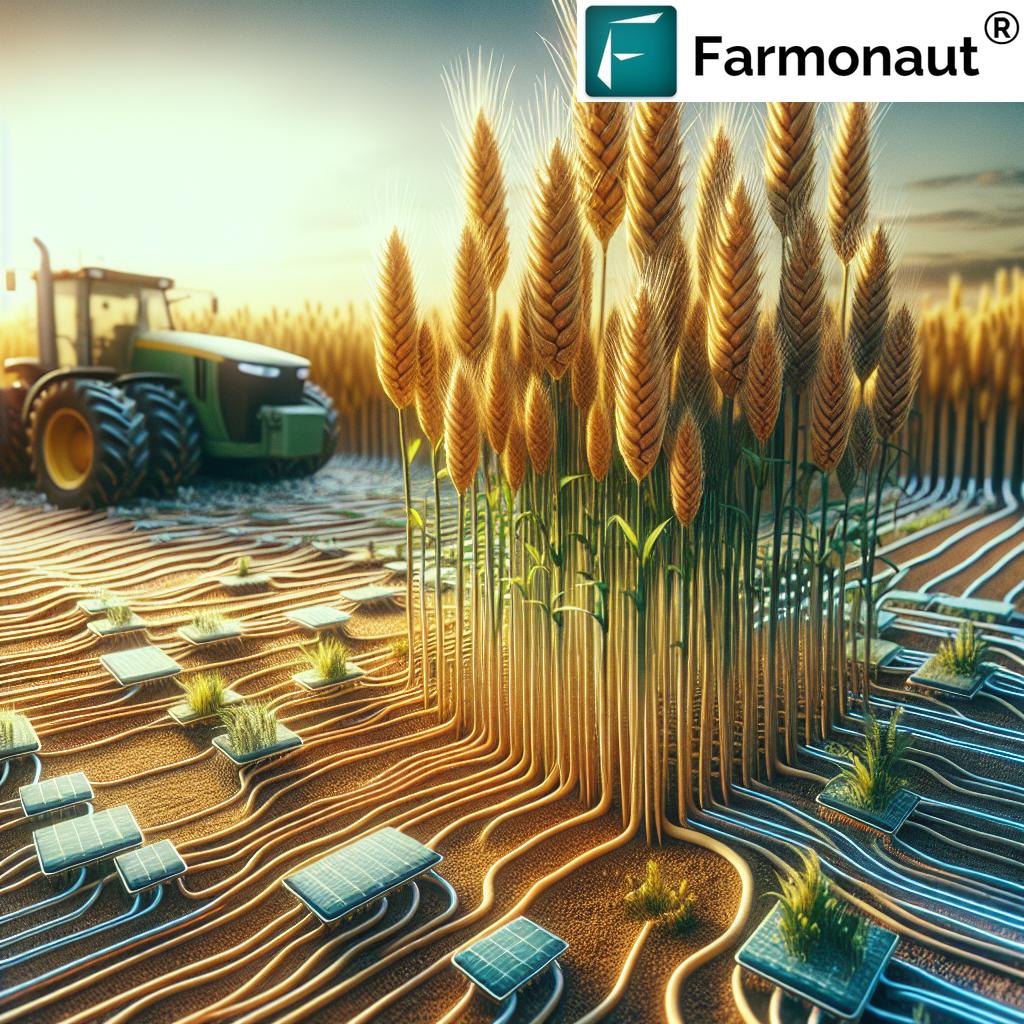New Farm Equipment Financing: 7 Powerful Trends for 2025
Meta Summary: In 2025, farm equipment financing is defined by economic pressures, rising interest rates, innovative models, and technology-driven solutions. Farmers must navigate a complex market—with fluctuating rates, high equipment costs, and a diverse array of traditional, government, and alternative financing avenues—to secure the machinery necessary for sustainable growth and resilience.
- Focus Keyword: farm equipment financing
- Other Keywords: agricultural equipment loans, farm equipment leasing options, interest rates for farm loans, financing farm machinery, alternative financing for farmers, flexible equipment finance terms, technological advancements in farm financing, sustainable agriculture financing solutions, market trends in agricultural equipment finance
Table of Contents
- Introduction: The 2025 Farm Equipment Finance Landscape
- Economic Challenges & Equipment Costs
- Interest Rates & Financing Trends
- Financing Options & Eligibility Criteria
- Leasing & Alternative Financing Models
- Technological Integration in Farm Financing
- 2025 Farm Equipment Financing Comparison Table
- Market Outlook & Future Trends
- Farmonaut’s Advanced Tools for Modern Agriculture
- FAQ: Farm Equipment Financing 2025
- Conclusion
Introduction: The 2025 Farm Equipment Finance Landscape
Agriculture is experiencing a fundamental transformation. As we look toward 2025, the landscape of farm equipment financing is evolving rapidly, impacted by economic volatility, changing interest rates, and the introduction of innovative financing and technology-driven solutions.
Modern farmers must adapt to soaring equipment costs, rising rates, and complex market challenges—all while striving for profitability and sustainability. With global demand for efficiency and food security intensifying, access to the right agricultural machinery and financing is more vital than ever.

Economic Challenges & Equipment Costs
Understanding the Pressures: Income Downturns in 2024–2025
The beginning of 2025 sees farmers facing economic pressures unlike any period since 2013. The projected 20% decline in net cash farm income for 2024 marks a steep downturn, most acutely affecting producers of core crops like corn and soybeans. These producers are grappling with record-low income levels, forcing a reconsideration of both operational spending and capital investments.
Rising Costs of Farm Machinery & Tractors
Another formidable challenge is the escalating cost of farm machinery. Tractor prices alone have risen nearly three times faster than the inflation rate since 1990. Such price increases amplify the cost of doing business, reduce profit margins, and compel farmers to weigh every machinery upgrade or purchase decision carefully.
- Higher equipment prices squeeze cash flow and limit investment in new technology.
- Smaller and medium-sized farms are especially vulnerable to these economic shifts.
- Delayed purchases contribute to decreased demand for new inventory and drive interest in pre-owned equipment.
Interest Rates & Financing Trends
The financing landscape for farmers has been profoundly shaped by higher interest rates. Central bank policies—aimed at inflation control—have led to elevated rates across most agricultural equipment loans.
Interest rates for farm loans now range from 4.5% to 6% depending on source, term, collateral, and applicant profile. Since farmers’ margins are tighter, these higher costs can substantially affect the total cost of ownership for any financing farm machinery.
- High rates discourage new equipment purchases.
- Access to affordable capital remains a concern for farmers.
- Many are opting for pre-owned equipment to keep upfront costs in check, which increases reliance on agricultural equipment loans to facilitate these acquisitions.
Explore satellite-based verification for agri-loans & insurance on Farmonaut for streamlined loan approvals and reduced fraudulent claims for agricultural equipment financiers and farmers.
Financing Options & Eligibility Criteria for 2025
Key Farm Equipment Financing Options Available
In the evolving market of agricultural machinery, farmers gain access to a diversity of financing avenues. Understanding the criteria for each is crucial for informed decision-making:
- Traditional Bank Loans & Leases
- Alternative Lenders
- Government Programs (e.g., USDA FSA Loans)
1. Traditional Loans and Leases
- Offered by: Commercial banks, credit unions, and farm credit institutions.
- Eligibility: Solid credit history, minimum annual revenue (typically $50,000+), and proven stable business operations.
- Down Payment: 10%–20% is standard; collateral is often the equipment or farm assets.
- Terms: Fixed and variable rate options; 2–7 year loan terms are most common.
Traditional options remain foundational—especially for farmers with established businesses and significant balance sheets—but approval can be lengthy, and requirements rigid.
2. Alternative Lenders & Online Platforms
- Examples: Peer-to-peer lending sites, fintech platforms.
- Benefits: Faster approvals, flexible requirements, and broader access for those with weaker credit.
- Risks: Interest rates typically run higher than banks, sometimes exceeding 7–9%.
- Usage: Attractive for equipment upgrades, urgent purchases, or working capital gaps.
Many of these platforms integrate technology to provide quick, user-friendly loan onboarding experiences and make use of operational metrics beyond just credit scores.
3. Government Programs: USDA’s Farm Service Agency (FSA)
- Direct Operating Loans: 5.125% (as of January 2025).
- Direct Farm Ownership Loans: 5.625%.
- Eligibility: U.S. citizens or legal residents; financial need; viable farm plan.
- Terms: Favorable conditions, sometimes with “beginning farmer” and “socially disadvantaged farmer” incentives.
Such programs offer crucial support—especially direct ownership and operating loans—empowering farmers who might not qualify for conventional loans due to credit, collateral, or income gaps.
Leasing & Alternative Financing Models
Farm Equipment Leasing Options: Balancing Flexibility & Long-term Value
Given tight profit margins and the surging cost of equipment, leasing is an increasingly attractive solution. By choosing farm equipment leasing options, farmers can operate the latest machines without the full burden of ownership.
Benefits of leasing:
- Lower upfront costs—limit capital outlay and preserve cash flow.
- Tax deductions—lease payments are often deductible as business expenses.
- Upgrade flexibility—allows regular access to innovative and efficient machinery models.
- Aligned with revenue cycles—leases can mirror seasonal income patterns.
Drawbacks: Higher total cost over a lifetime and no equity build-up, potentially making this option less optimal for farmers seeking long-term asset accumulation.
Want to optimize your machinery use? Explore Farmonaut Fleet Management for agribusinesses to efficiently manage logistics, reduce operational costs, and better control machinery utilization.

Alternative Financing for Farmers: New Models for 2025
There is a wave of alternative financing for farmers that moves beyond loans and traditional leases. These innovative models are designed to meet the needs of an evolving market and address the unique revenue cycles in agriculture:
- Pay-per-use services—farmers pay only when using specific equipment, aligning costs with actual utilization.
- Flexible repayment models—set terms that match seasonal cash flow or periods of high operational expense.
- Short-term rental & sharing platforms—foster access to advanced machinery on demand.
These financing solutions allow farmers to test-drive technology and adjust fleet size according to market demand and operational need, supporting both efficiency and adaptability in complex environments.
Technological Integration in Farm Financing
Technological Advancements in Farm Financing: Smarter, Faster, More Secure
The integration of technology into farm equipment financing is one of the most impactful trends for 2025 and beyond. Thanks to digital tools, artificial intelligence, and data-driven underwriting, the process of financing farm machinery is becoming more efficient, accessible, and aligned with individual farmer needs.
- Data-Driven Risk Assessment: Lenders now leverage operational metrics, crop health data, and real-time bank transactions for precise borrower evaluation.
- Embedded Financing Platforms: Financing offers are integrated directly into the sales journey—whether online or in-dealer—so farmers can quickly get pre-approved or compare flexible equipment finance terms at the point of sale.
- Sustainability-Linked Incentives: Some loan models offer better rates or terms based on environmental metrics such as carbon reduction, water management, and sustainable agriculture goals.
These technological upgrades not only speed up decisions, but also foster a more inclusive and transparent farm equipment financing environment.
Discover Farmonaut’s blockchain-based product traceability—empowering transparency throughout the agricultural supply chain for businesses and corporate clients.
The Role of Farmonaut in Technological Integration
We at Farmonaut strive to bridge gaps between traditional practices and modern agricultural finance. Our precision agriculture platform supports smarter lending and insurance by providing real-time crop health monitoring and reliable ground truthing using advanced satellite data. This empowers both farmers and lenders to make better, data-informed decisions, helping reduce risk and unlock new financing avenues.
2025 Farm Equipment Financing Comparison Table
The table below provides a clear comparison of the dominant financing options for farmers in 2025, including typical interest rates, terms, down payment requirements, and notable industry trends. Use this as a starting point to evaluate which models best meet your operational and financial needs.
| Financing Option | Estimated 2025 Interest Rate (%) | Typical Loan/Lease Term (years) | Down Payment Requirement (%) | Notable Trend | Estimated Market Share (%) |
|---|---|---|---|---|---|
| Traditional Bank Loans | ~5.0–6.0 | 3–7 | 10–20 | Integration of operational metrics for smarter risk assessment | 30 |
| Equipment Leasing | 4.5–5.5 (imputed, lower upfront but higher over term) | 2–5 | 0–10 | Rising popularity due to flexibility and tax benefits | 35 |
| Government Loans (e.g., USDA FSA) | 5.125–5.625 | Up to 40 (ownership), 1–7 (operating) | 0–10 | Expansion of eligibility, incentives for beginning and sustainable farmers | 15 |
| Alternative Lenders / Fintech Platforms | 6.0–9.0 | 1–5 | 0–15 | Fast approval, embedded finance, flexible repayment models | 12 |
| Pay-Per-Use & Flexible Rental | Variable / usage-based | Short-term (weeks–months) | None | Growth in sharing economy models, enabling efficiency and access | ~8 |
Source: Aggregated analysis based on current market reports, 2025 lending rates, and industry expert forecasts. Market share percentages are indicative and may shift through the year.
Market Outlook & Future Trends in Agricultural Equipment Finance
Market Trends in Agricultural Equipment Finance: Regional Highlights & Growth Projections
- Asia Pacific: Projected to hold 41.8% of global revenue in 2024, with mechanization fueling equipment demand.
- North America: Generated $14.55 billion in equipment finance revenue in 2024, with a projected CAGR of 3.2% from 2025 to 2030.
- Global Market Growth: Overall, the agricultural equipment finance sector is set to expand at a CAGR of 5.6% through 2030, as farmers upgrade to more efficient machinery.
Leasing remains the largest revenue segment, while digital borrower journeys, sustainable finance incentives, and embedded financing platforms are expected to disrupt traditional models and drive broad-based adoption.
- Flexible solutions: Alternative lenders and fintech are growing market share through rapid approvals and less restrictive requirements.
- Embedded finance: By 2030, this approach could represent a $230 billion industry, powering seamless integration of lending within the sales process.
- Environmental impact: Carbon footprinting, resource management, and sustainability metrics are now integral to both lending criteria and eligible incentives.
Administrators of large farms can leverage Farmonaut’s Large Scale Farm Management platform to unlock superior crop monitoring, reduce wastage, and support real-time operational decision-making, boosting overall productivity.
Preparing for Evolving Financing Models
With global food demands rising, and technology enabling greater transparency and precision, farmers who are informed and agile will be best positioned to thrive. Whether choosing traditional bank loans, exploring farm equipment leasing options, or tapping into new flexible financing models, understanding the trends will ensure better capital allocation, productivity, and risk management in uncertain times.
And as innovative products and digital platforms continue to emerge, both smallholder and corporate farm businesses must regularly review their financing strategies and eligibility to align with the changing landscape.
Farmonaut’s Advanced Tools for Modern Agriculture
As a leading agricultural technology platform, we at Farmonaut are committed to making precision agriculture affordable and accessible worldwide. Our solutions support farmers, agribusinesses, and institutions with advanced farm management tools, directly contributing to more informed funding and operational decisions.
- Satellite-Based Crop Health Monitoring: Our Web, Android, and iOS Apps
deliver real-time NDVI, soil moisture, and vegetation health metrics, supporting strategic allocation of loans and targeted investments. - Jeevn AI Advisory System: Personalized AI-driven advice for efficient crop management—enabling farmers to maximize yields and better utilize financed resources.
- Blockchain-Based Product Traceability: Traceability increases supply chain transparency and integrates sustainability into finance qualification.
- Fleet and Resource Management: Fleet Management tools optimize the use of financed machinery, reducing operating costs and improving logistics efficiency.
- Carbon Footprinting: Track and reduce your environmental impact to secure better sustainable agriculture financing solutions and comply with global standards.
By integrating satellite verification for crop loan and insurance processes, we help both farming businesses and financial institutions reduce fraud and increase access to capital via crop loan support.
Explore Farmonaut’s suite of solutions via our APIs for seamless integration:
FAQ: Farm Equipment Financing 2025
1. What are the top trends in farm equipment financing for 2025?
The top trends include higher interest rates, growth of leasing over outright purchases, increasing adoption of alternative and flexible financing models, embedded finance at dealerships, sustainability-linked lending, and deeper integration of technology in risk assessment and approvals.
2. Are leasing options better than purchasing for farmers?
Leasing provides flexibility, lower upfront costs, and potential tax benefits, making it ideal for farmers who want the latest machinery or operate with tight margins. However, leasing can be more expensive over the long term and does not build equity. Evaluate based on business goals and operational needs.
3. How can I qualify for farm equipment financing in 2025?
Qualifying depends on credit history, business stability, annual revenue (usually $50,000+), collateral, and sometimes sustainability metrics. Explore traditional banks, government programs, fintech lenders, and leasing companies for diverse options.
4. Are there government-backed programs available?
Yes, programs like USDA’s Farm Service Agency (FSA) in the United States offer direct ownership and operating loans at favorable rates and terms for eligible producers, with some programs targeting new and socially disadvantaged farmers.
5. What role does technology play in farm equipment financing?
Modern lenders use data-driven risk assessment—integrating operational metrics, real-time financial data, and satellite monitoring—for faster, fairer decisions. Embedded finance platforms, AI tools, and sustainability incentives are revolutionizing the farmer financing experience, lowering risk and increasing access.
6. How does Farmonaut support loans and crop insurance?
We offer satellite-based verification for crop loans and insurance, helping both financial institutions and farmers reduce fraud, speed up approvals, and ensure that resources are directed to viable, productive operations.
Conclusion: Staying Informed & Agile Amidst Changing Farm Equipment Finance Trends
Farmers in 2025 are navigating one of the most dynamic landscapes in decades. Rising equipment costs, economic pressures, and fluctuating interest rates mean every financing decision requires strategic analysis. But thanks to new leasing options, innovative financial solutions, and the integration of digital technological advancements—farmers have more options and flexibility than ever before.
By staying informed about market trends in agricultural equipment finance, evaluating both traditional and new financing options, and leveraging technology platforms like Farmonaut for smarter decision-making, today’s agricultural producers can build resilient, sustainable, and profitable operations.
Want to take your farm management to the next level? Try our web and mobile solutions today, or deploy our API or fleet management resources for granular operational control.
The future of farm equipment financing is dynamic, data-driven, and defined by partnership between technology and agriculture. As we continue our mission to empower the global farming community, Farmonaut remains dedicated to delivering the insight and support farmers need to thrive in a rapidly changing world.













